VeloceToday recently completed a two-part book review on the work of Marcello Gandini authored by Gautam Sen. We are also reviewing a book about the De Tomaso Mangusta, by ex-GM designer Dick Ruzzin. In October, author and collector Paul Wilson allowed us to spend some time with his Lamborghini Miura. The three are uniquely qualified, if not over-qualified (read bios at end of the article).
Also, we are offering FREE to VeloceToday readers, a PDF of the first 52 pages of “Gandini, Maestro of Design” (read review). This gives you, our readers, a chance to join in on the discussion and read the complete fascinating story of Gandini and Miura. Click here for details.
While discussing the Gandini book (in which he was quoted), Ruzzin offered some thoughts about the nature of the Miura design. “When an artist sits down to do his work, all of his lifetime experiences and values come to bear on what he is trying to create. This is inevitable and cannot be prevented, as art is a reflection of the essence of the artist’s intellect in the form of sculpture, music, painting, or car design.” Although no one is challenging Gandini’s role as the designer of the Miura, the images that Ruzzin sent along were nevertheless thought-provoking.
In short, Ruzzin presented this argument:
“Compare these two images. Look at the body side of the dark red coupe design by Giugiaro, compare it to the Miura. The design is the same, proportions obviously different.
The Miura headlight theme is an evolution of the FIAT 850 Spyder. The windshield is very Stratos-like. These are Bertone design elements, put together.
Both are cars with the upper sitting on the lower, which makes for easy glass drop and other details. The fine detail seen everywhere on the Miura is also seen on many other Bertone designs before the Miura.”
This more or less reopened the discussion about influence, origination and originality.
Therefore, VeloceToday asked Gautam Sen, Paul Wilson and Dick Ruzzin to give us their thoughts.
The question sent to each one was:
How often are designers influenced by others, consciously or subconsciously, and how may this have applied to the young Gandini at Bertone?
Response: Gautam Sen
I completely agree with the fact that automotive designers are (like all designers) consciously and subconsciously influenced by others and that the Miura showed several influences, including that of Giugiaro’s. But comparing just the front three-quarter images of a Miura to that of a Grifo is like comparing Donatello’s David to Michelangelo’s David: both are statues of standing men who are nude for the most part, with the physique of a warrior, yet very different in their final posture and the overall effect.
The fact of the matter is that the most important influence – as admitted by Gandini himself – was that of the Chevrolet Corvair Monza GT and SS, as well as the Ford GT 40 (both for the treatment of the surfaces and edges, as well as the proportions). Yes, the headlamps did come from the Fiat 850 Spider (as did the rear lamps), but that was a commercial decision (the 850 Spider was being manufactured by Bertone). Yet the “eyelashes” to “disguise” the lamps’ origins was most unusual. For the first time ever, we saw the use of a Perspex rear window over the engine (Ferrari got around to using it for the F40 20 years later). Other benchmarks included the slats, plus the use of black color for the bumpers and trims (when chrome was still in vogue), a clamshell front and rear opening for a production car, and finally, that wraparound windscreen, which is indeed very Stratos-like – but then the Stratos was a Gandini design from 1971, five years later.
Response: Paul Wilson
I’d say the Ford GT40 was the single biggest influence on the Miura’s design. Compare this 1965 GT40 Mark I with my Miura. All designers would have been familiar with the Fords from magazine pictures, and maybe from seeing actual cars, since they were relatively numerous.
Pete’s first photo with his story shows the Miura’s most original elements: the rising curve at the rear of the side window, the graceful rear fender line, and the shoulder scoop with the slatted bars. All are improvements on the GT40, I think. The Miura’s characteristic shapes are halfway between the full roundedness of the GT40’s rear haunches and the folded-box flat panels of the later “wedge” fashion, a perfect balance that’s seen most clearly from the rear quarter. Not round, not square; just right. From the side, I like the Miura’s aggressive beak in front, but from its disastrous 1964 model with a similar shape, Ford had learned a lesson about front lift, so later cars have no “chin,” or upturn below the air opening.
Refinement and elegant detailing, rather than originality, are in my opinion the great achievement of the Miura’s design. I think it’s a brilliant realization of the GT40’s potential.
Response: Dick Ruzzin
The answer is always. Like all of the arts, design is a creative cultural continuum that is often advanced by different people in different places. A designer can choose to isolate himself when starting to solve a problem but then takes a great risk in developing a solution well below the bar that is continuously being raised by technology.
My thoughts about the elements that came together during the Miura design process. It is really very simple aside from all the interviews, sketches, etc.
1. Gandini was new, as stated in the book, he credits the Corvair Monza GT as inspiration. It inspired many designers.
2. Giugiaro’s artistic and design history resulted in the continuing Stile Bertone design culture, while he was there and after he left. That is where and how the Miura was created . We cannot ignore the aesthetic content, participation and added value of the design staff as well as the influence of Nuccio Bertone. Gandini was not the only person in the room
3. On the next project, The von Neumann Porsche 911, Gandini turned to a Giugiaro design for inspiration, an actual imitation, the FIAT 850 Spyder. Judge the result for yourself.
4. After that, the Jaguar Tarchini FT 3.8 is clearly the work of an inexperienced designer. How could the person who designed the Jaguar design the Miura? Unless there were other influences?
So, Design is complex, it is never done the same way twice. One can accept the claim that Giugiaro was not involved. If so, in my opinion, you are not correct. Gandini learned pretty fast as the later designs show. I feel he was stronger in developing unusual concepts, like the Carabo, than daily drivers like the Ritmo.
Would you like to join the debate? See what the discussion is all about! Get the first 52 pages of Gautam Sen’s book “Gandini, Maestro of Design” on this FREE PDF. Read about Gandini’s early years, his remarkable hiring by Nuccio Bertone and an analysis of the amazing Miura design. Plus, overviews of the “von Neumann” Bertone Porsche and the Jaguar FT 3.8. Only Premium Subscribers are eligible.
Design Forum Biographies
To better appreciate our panel’s qualifications, we felt it necessary to include a brief bio of each person. It is an honor for VeloceToday to conduct this conversation with such highly qualified experts.
Gautam Sen
Internationally acknowledged as the leading automotive journalist and writer in India, Gautam founded the country’s first newsstand car magazine Indian Auto in 1986, and also launched Auto India in 1993, which became India’s best-selling car magazine ever. Later he also launched the Indian editions of the German Auto Motor und Sport and BBC’s TopGear magazines. Since 2007 Gautam has been back in the driver’s seat at Auto India and has been dividing his time between Paris, where his family lives, and Mumbai. Since beginning his automotive career at Maruti Udyog in 1984, he has also consulted at various levels in the areas of technology, design and product development, interacting with the likes of Hero Motors, Hindustan Motors, Ideal Jawa, Mahindra & Mahindra, San Motors, Tata Motors and TVS-Suzuki. Gautam also lead the design and development of India’s first sports car, the San Storm. Whilst working on design and development projects, Gautam has worked with eminent designers such as Gerard Godfroy, Tom Tjaarda and Marcello Gandini.
Since 2015 Gautam has also been a Vice President with FIVA (Fédération Internationale de Véhicules Anciens). He also been a member of the jury at several events: The Statesman Vintage Car Rally, the Le Mans Classic and Chantilly Arts & Elegance. Gautam has authored several critically acclaimed books on automobiles: The Maharajas & Their Magnificent Motor Cars, The Car Design Book, Rolls-Royce 17EX A Fabulous Destiny, A Million Cars for a Billion People and Marcello Gandini: Maestro of Design.
Dick Ruzzin
Dick Ruzzin is a retired automobile designer from General Motors Design Staff. During his career he worked on more than 140 car design projects as a creative designer, studio head and as Director of Design for G.M. Europe in Germany and as Director of Design for Chevrolet in the United States. He also did work in England, Italy, Australia, Brazil, Sweden and Japan and acted as a design educational consultant after retirement in China and Taiwan as well as for GM Design Center. He took a major role in the design of the Bitter CD while working in Germany.
His favorite projects in which he had full design responsibility for are the 1990 Chevrolet APV, and the 1991 Caprice as well as the 1992 Cadillac Eldorado, Seville, Deville and Fleetwood. In Europe the 1993 Opel MAXX concept car and all of the Opel production cars are special personal achievements. The X Car Advanced Design work was also memorable for its impact on the future of General Motors.
Born in Detroit in 1936, he lives with his wife in Grosse Pointe Park, MI and two Siamese cats, Mia Mia and Maurice. He is a car and design enthusiast and has made a special effort to develop his design communication skills. He has written for International Design Magazine, Alitalia and has created his own book, BELLA MANGUSTA, The Art and Design of the De Tomaso Mangusta in 2016.
Dick owns a DeTomaso Mangusta 8MA-670, the only car built at the factory with a Chevrolet Corvette small-block engine, and a Corvette-powered 1979 Bitter CD, number 362.
Paul Wilson
Born in 1944, Paul graduated from Harvard with a degree in English and got his PhD from University of VA, then taught at VMI. His father taught him the love of old cars and as child he helped his father work on a Rolls-Royce and other family classics. Throughout his teaching career, Paul owned and restored a huge variety of classic cars ranging from a 1909 Renault to a Lola Can Am car. He is an active vintage car racer, generally running an American-built Jabro but also races the Lola and an Elva Mark II. Today his collection includes an Amilcar, Alfa 1900CSS by Touring, a Lamborghini Miura and a stunning Alfa 2500 with a coupe body Paul designed and built himself.
In his book, Automobile Styling Since 1893, aka Chrome Dreams, he investigates the vagaries of public taste in automobile styling and offers a surprising number of interesting revelations as to why certain designs are popular and why others fail. Another of Paul’s books, How Inventions Really Happen, will be published this year.
A lifelong rower, in 1972 he was a member of the U.S. Rowing team at the Olympics and his garage walls are decorated with a number of rowing boats and oars.
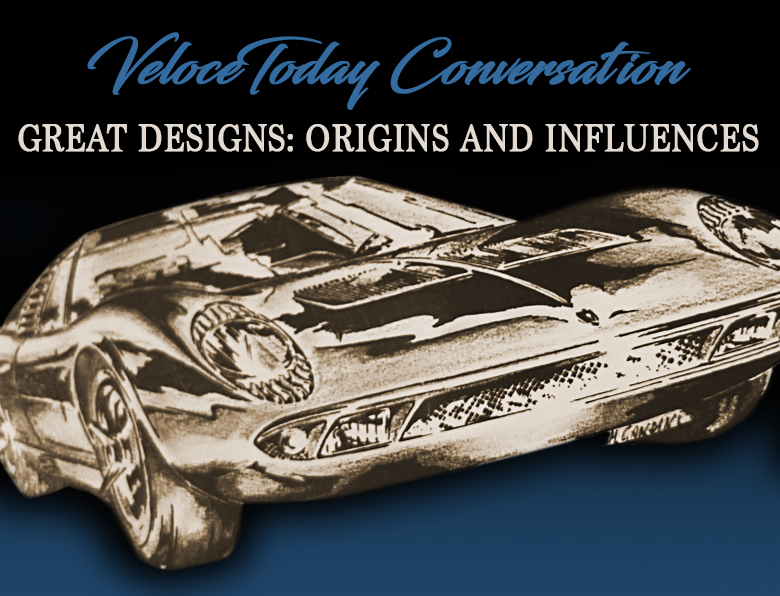
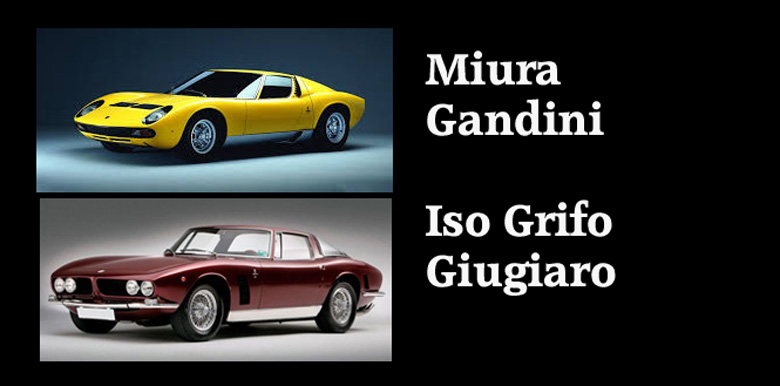
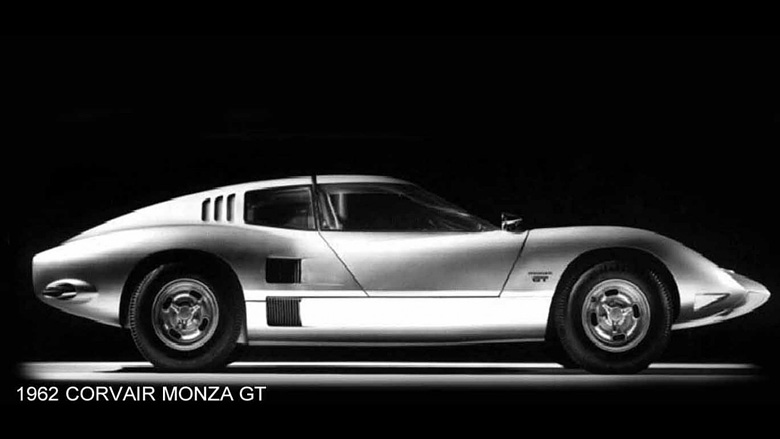
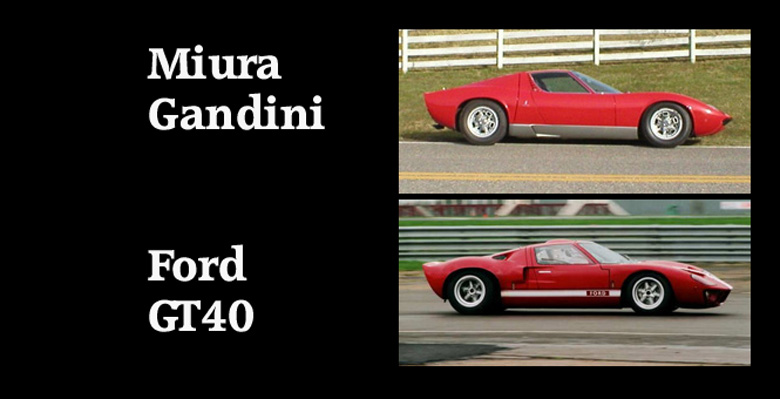
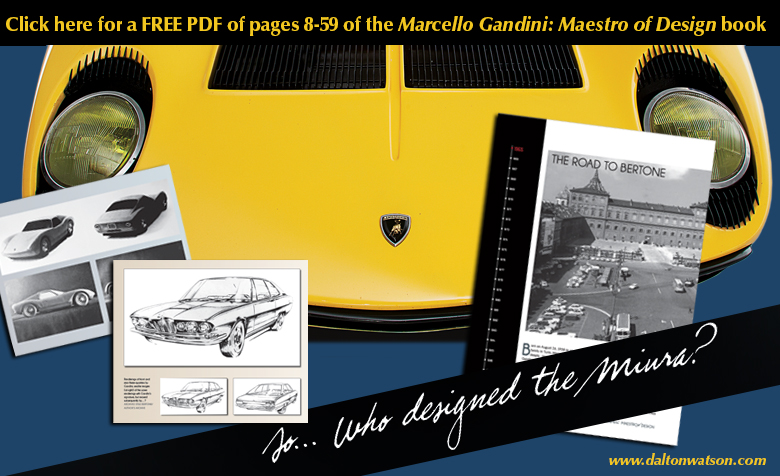

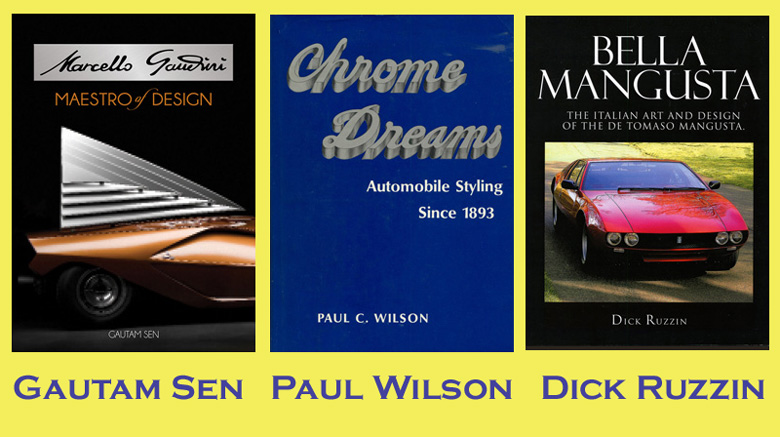
While living in Italy between 1988 and 2005 I worked as an automotive journalist with a particular interest in design. I frequently visited Italdesign and during one interview with Giorgetto concerning the origins and design process for the original Fiat Panda he took me into his personal design studio and from a large drawer pulled out his initial drawings for the car that became the Miura. The proportions, profile and overall appearance were pure Miura. Giugiaro told me that he designed the car and Gandini added the detail touches (the headlight eyebrows for example), after he left to start Italdesign. A couple of years later, aware of the controversy, I believed I had persuaded Giugiaro to allow my photographer to photograph the drawings. However, he finally decided that he did not want to upset Nuccio Bertone (still alive at the time) and withdrew his permission. I’d be greatly surprised if these drawings do not still exist. I remain convinced that the Miura is essentially the work of Giugiaro.
Peter Robinson (formerly European editor Autocar magazine).
the lancia 037 had a clear panel over the engine before 1983
This is new information for me from Peter but it justifies my assumption that Giugiaro left AFTER the design was set. Gandini should have clarified this situation years ago.
THE MIURA DESIGN, MY SUMMARY
__________________________________________
My final thoughts about the elements that came together during the Miura design process. It is really very simple aside from all the interviews, sketches, etc.
>THE FACTS, SOME FROM THE BOOK.
1.
Gandini was new, as stated in the book, he credits the Corvair Monza GT as inspiration. It inspired many designers.
2.
Giugiaro’s artistic and design history resulted in the continuing Stile Bertone design culture, while he was there and after he left. That is where and how the Miura was created . Do not ignore the aesthetic content, participation and added value of the design staff as well as the influence of Nuccio Bertone. Gandini was not the only person in the room
3.
On the next project, noted in the book, Gandini turned to a Giugiaro design for inspiration, an actual imitation, the FIAT 850 Spyder. Judge the result for yourself.
4.
After that, also shown in the book, the Jaguar that is clearly the work of an inexperienced designer. How could the person who designed the Jaguar design the Miura? Unless there were other influences?
So,
Design is complex, it is never done the same way twice. You can accept the claim that Giugiaro was not involved. If so, in my opinion, you are not correct.
Gandini learned pretty fast as the later designs show. I feel he was stronger in developing unusual concepts, like the Carrabo, than daily drivers like the Ritmo which is not remarkable when compared to the FIAT Panda the Opel Corsa or the Ford Ka..
DICK RUZZIN
___________________________________________________________
There is a scale model on the internet that is supposed to have been done before the Miura at Lamborghinis direction. Gandini, a beginner, was not the only person in the room.
This model is a crude representation of a mid-enine car. The proportions are there, similar to the final Miura but the design and form language is very unsophisticated. Still it could have been an early expression of the later car. Some details are similar but it is hard to believe that the car started at Bertone would end up so close to the model unless there was a genuine influence. That influence was the mid-engine platform over which the design was done, it is the same..
The model is in several different stages with changes and obviously late photoshop editions like the Corvair Monza GT backlite slats, probably added later in the program, possibly by Bertone. The body side section, very much like the previous Iso Giugiaro RWD coupe is no accident as it could mean the desire by Lamborghini for the use of common door hinges, locks and glass drop mechanism. The high rocker, like the coupe, is also another sign of either trying to create a family design identity or other engineering criteria. Also the very low hood, which supposedly was inspired by Gandini early in the program at Bertone. This does not make sense unless the Lamborghini engineers did not respond to Flavio’s desires.
The profile of the two fender shapes with the section between them is very much like the final car and the previously mentioned Giugiaro RWD coupe. The fender peak flowing into the front end is also very much like the Monza GT.
The model also shows several attempts to lower drag, like the rear of the front wheel openings and windshield-side glass relationship that is very different than the final design. Also there is a depression on the rear deck that could be interpreted as a forward spoiler. This would be fruitless and only a design shape as no one would know the ideal height and length of the decklid aerodynamically unless it was aero tested.
This model, if unchanged from the time it was presented to Lamborghini, is in some ways predictive of how the car was finalized. This is the result of the influence on the exterior design by the platform, the proportions and hard points under the skin.
What is sorely lacking here is the wonderful surfacing epitomized in Giugiaro’s work for years at Stile Bertone. Also visible in the Miura.
Here is a crude timeline based on what has been known, this presentation and the new Gandini book statements about the car.
1.
The Touring model, as it is , is predictive of the final design,
2.
Lamborghini expresses admiration for the Alfa Romeo Cangaro.
3,
Giugiaro makes some sketches with Cangaro design cues.
4.
Bertone meets Lamborghini at the Turin Show and sees the chassis.
5.
Bertone is chosen to create a design for the Geneva show four months later, a very stiff assignment.
6.
It is possible that Bertone saw this model which would have given him a huge head start, which Bertone would have been happy to have. Lamborghini could have had drawings of it.
The Bertone staff, designers, engineers and sculptors were operating for years under Giugiaros aesthetic direction. They did not stop just because he left and Gandini arrived. The form language of the Miura is very sophisticated and sensual as well as emotional in it’s execution. There is no doubt that Giorgetto Giugiaro had an influence and likely left when the design was finished.
DICK RUZZIN
Yes, the original design for the “covered headlight” Fiat 850 Spider of 1965 to early 68 had a lot more influence than might be expected from such an “economy-based sports car”. What a pure design it was before federal regulations added all the hung-on requirements in the later years…… Greg Schmidt (co-author of “ABARTH” the first book published on the subject in 1983) gschmidt48@yahoo.com
Greg, would certainly like to talk to you! Will email you separately.
Pete
THIS TELLS THE STORY FROM GANDINI HIMSELF.
Even the maestro himself confirmed the ease with which the Miura design came about:
“Giugiaro left me a shape whose proportions fitted the mechanical design of the car, and the lines of the Miura just seemed to flow from that, it was as if they were there and I just had to find them” (from Autocar, June 1988). 15
DICK RUZZIN
This should be added to the above.
In this interview by Autocar Gandini clearly states that Giugiaro left the Miura “Shape”. Was it the Bizzarrini GT ?That car, a gold colored rendering was proportionally like several open race cars that Giugiaro had done for DeTomaso. He had experimented with one offs, creating a new proportion with a very low body, making the wheels emerge as a stronger design element. Like the English Lister race cars. The Bizzarrini rendering was like that with a large roof.
The Miura probably had to be re-adjusted for ergonomic and architectural reasons, however it ended up very low.
DICK RUZZIN
This is a great idea to ask the experts what they think about the author of the Miura design. There is an existing intrigue around this issue, no wonder that Mr. Bertone said in an interview: “Miura is mine!” .
The similarity with the Ford GT40 is not accidental, because he used it as a model to follow in the designing.
Some kinship and resemblance with previous creations of Giugiaro do not look like a simple coincidence, it is hard to believe but when he left Bertone’s office he took all the sketches along!
What is said by Mr. Robinson, seems to be very important, even though he has not received any evidence in respect thereof. That’s why we can assume that the design of the Miura is a successful mixture of different designers’ ideas. Gandini then proved his genius as a designer in his later works, many of which became unsurpassed masterpieces.
The Ford GT as an early influence would quickly fade as Giorgiaro created the “shape” that Gandini used to “find” the design. With a transverse powertrain the platform was very different than the Ford, shorter and resulting in a much smaller car.
By Gandini’s own admission Giugiaro had a strong influence, added to by the previous Giugiargo design elements like headlamps, tailamps, rocker panel, windshield and sweeping cowl into the door.
This exercize by Veloce Today has resulted in information and studied conclusions that show the undeniable influence of Giorgetto Giugiaro in the design of the Lamborghini Miura.